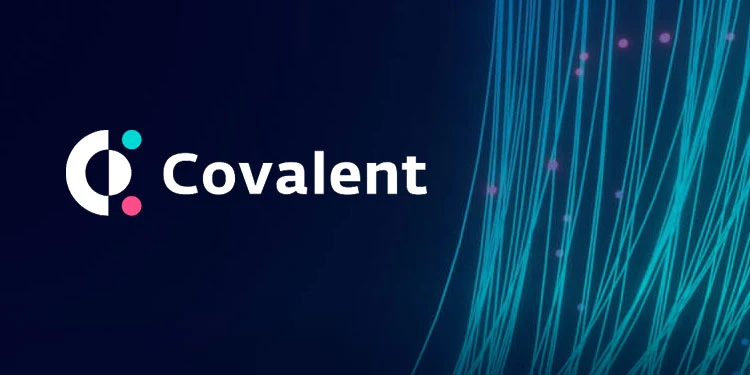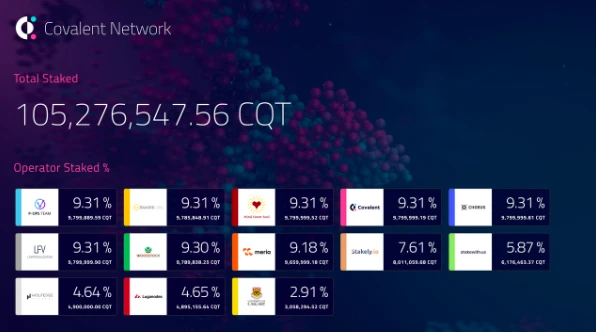
Staking is an integral part of Covalent Network. Covalent has gradually developed into the most comprehensive query and indexing protocol for Web3, and staking is indispensable. Covalent Network is committed to empowering node operators and CQT holders to secure and enhance the Web3 experience.
Why staking is important
Staking is an important part of the Covalent network. This mechanism was established to adjust the incentive mechanism and maintain the quality of operations within the network. Only node operators that meet the minimum CQT staking amount requirement (currently 175,000 CQT per block sample producer) are eligible to submit proof that the blockchain data is correctly extracted from the indexed blockchain and therefore Earn rewards. If node operators act maliciously or dishonestly, their rewards will be slashed. On the other hand, node operators can increase revenue by providing valuable utilities to the network.
In addition to node operators, CQT holders who choose not to run a node can also delegate their tokens to node operators and receive rewards for helping to protect the protocol.

CQT staking data as of December 2023
Reward distribution
Covalent Network’s initial staking revenue and network rewards come from staking allocations (8% of the total supply). The allocation is intended to supplement network rewards and will last up to four years.
Over time, the staking smart contract will issue rewards based on the interest rate determined by the contract. This approach ensures that node operations remain profitable. The reward issuance rate is measured in units of CQT per epoch (24 hours), meaning staking returns will be adjusted based on the amount of CQT staked. As the contract owner, Covalent monitors and updates the CQT issuance rate to maintain a reasonable match between staking returns and the amount of CQT staked.
How to stake on Covalent Network
Staking on Covalent Network is a simple and straightforward process. Heres a brief overview:
Connect wallet:First, navigate toCovalent Network Staking Dashboard. The system will prompt you to connect the wallet. If you havent connected your wallet yet, follow the instructions to connect to Moonbeam Network through your wallet.
Delegate tokens to node operators:CQT tokens can be delegated to node operators on the staking dashboard. Delegators will receive a corresponding proportion of CQT rewards based on their pledged amount.
Select node operator:When choosing a node operator, consider factors such as commission rates and available delegation for staking.
Staking CQT:To stake, select an operator, click Stake, and specify the amount of CQT to delegate. Users need to approve contracts to interact with the wallet and confirm transactions. After completing these two operations, CQT will be officially staked.
Increase the pledge amount:If you wish to increase the pledge amount, you can select the increase pledge option after delegating CQT. Follow the same process described above and the new staking amount will be displayed on the dashboard.
Redeem CQT rewards:Rewards can be redeemed at any time with no cool-down period. Under My Delegates you can view the amount available for redemption. Select Redeem, select your desired amount, pay transaction fees, and receive your rewards.
Undelegated CQT pledge:Undoing a delegation requires a cooling-off period. Delegators have a 28-day cooling-off period, while node operators undergo a 6-month de-delegation period. During the cooling-off period after decommissioning CQT, the amount you decommissioned can be recovered.
Staking on Covalent Network not only protects the security of the network, but also earns rewards for your contributions.
This is your chance to participate in the future of Web3 with the leading data infrastructure protocol. Join us.
Western media reference:
https://www.newsbtc.com/press-releases/how-to-stake-cqt-on-the-covalent-network/










